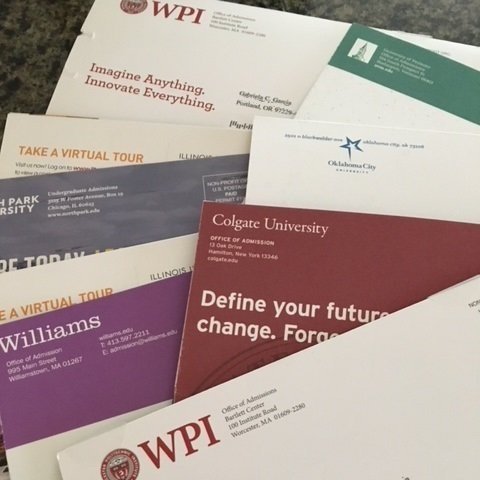About All That Mail…
Does your mailbox look like this each day?
You may think, based on this, that your student is a known entity to basically every college in the US. However, that assumption is probably incorrect and could cost you.
A while back I wrote about stealth applicants and how they are less likely to be admitted than are students who are known to the schools, and often receive less generous aid packages than students with similar credentials who have interacted with the school. Students and parents who are overwhelmed with print and email from schools may not be aware that they are not in fact in those schools’ databases.
College mailings are like direct marketing campaigns in other industries: More often than not, they are outsourced to third parties. Schools may buy marketing lists from the College Board or ACT and contract with a mailing service to contact the students on the list. If you’re wondering why many of these mailers include an “offer” such as a booklet or other information that the students can contact the school to get, it’s because the school only gets the student’s data if the student responds to the offer.
Not all schools consider demonstrated interest in admissions decisions, but many do. And one might assume that more and more will, since the back-door assessment of interest, the student’s FAFSA school list, is no longer visible to schools. You can find out how a school considers demonstrated interest on Collegedata.com. Find the school you’re interested in, then select Admissions. Scroll down to the “Selection of Students” section and look for “Level of Applicant’s Interest.”
Regardless of what the website says, though, your student will not be harmed in the admissions process by having documented contact with the school, even if it’s just a phone call or clicking on the link in the email the school sent.

